Small rodents, which include domestic hamsters, are extremely prolific animals. Their puberty occurs quite early, already in the second month of life, and the offspring brought by the female for one offspring can be very numerous. It often happens that after buying one hamster, soon a whole flock of them appears in your house, as the female was pregnant at the time of purchase.
The birth of babies is a joyful and amazing event, but it often happens that the mother is not ready for the birth of the cubs and refuses to feed them. In this case, the care of the kids completely passes into the hands of a person. What to do and how to cope with such a difficult mission, we will tell in this article.
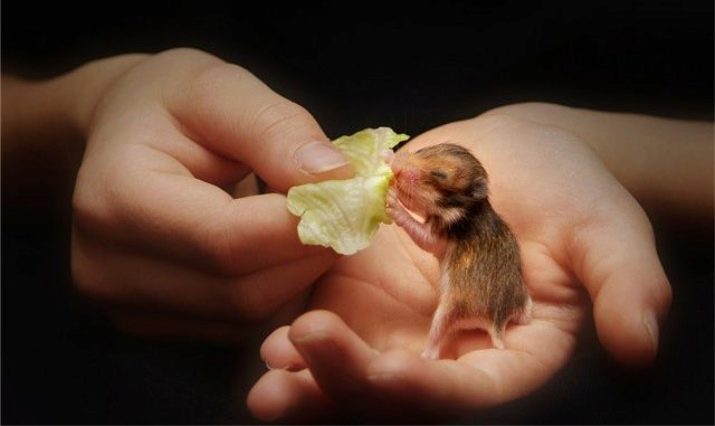
What do they look like?
In one litter in an adult sexually mature individual, 3 to 15 cubs can be born. It all depends on how much the female is provided with food, whether she is healthy, what breed she is. Animals are born very small (only 2 or 3-5 grams in weight), while they don’t have any hair at all, their eyes are closed and they don’t see anything, blood vessels are clearly visible through a translucent thin skin, the hearing is absent at this time in babies - that is, they are absolutely helpless little creatures. The first 8-10 days of their life, newborn hamsters can not navigate in the world around them.
Since birth, hamsters have very weak motor activity, babies keep together to maintain heat, forming a single living lump. Finding their mom and finding nutritious milk helps them inherent smell. After a couple of weeks, the smell of the hamsters begins to worsen more and more, which makes the kids touch and crawl to examine the territory of the nest, and then the space behind the nest. By the end of the second week of life, the babies begin to open their eyes, hearing is activated, the fur begins to break through.
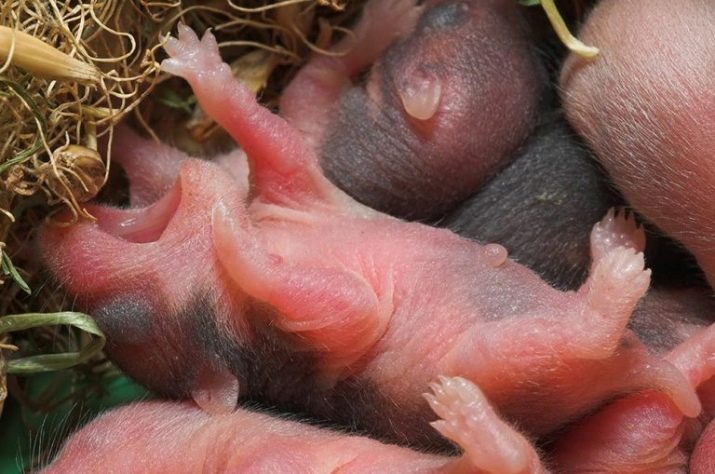
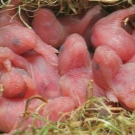
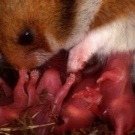
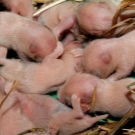
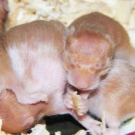
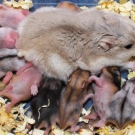
In the early days of life, hamsters need frequent food: in order to gain strength and get stronger, they must drink mother's milk every hour, day and night. This is a very important period in the life of newborns. The digestive system of the crumbs is very weak now, so any unsanitary conditions can lead to their poisoning and death.
Hamsters literally from birth have the ability to make squeaking sounds. With this signal, they inform their mother that they are feeling cold or hungry. This sound is initially quiet, you may not even hear it, but over time it may become piercing.
Often there were cases that the owners of hamsters learned about the offspring only during the cleaning of the cage or when the grown children themselves crawled out of their nest. At the age of 4-5 weeks, small hamsters can already be handed out to new owners - by this moment they are completely independent and can already begin to mate.
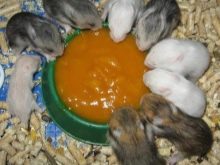
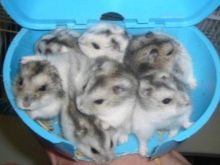
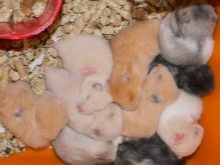
Care
Young females, especially in their first litter, may not know what to do with newborn hamsters - this happens because their maternal instinct has not yet fully formed. If you notice that the female does not show interest in her offspring during the first day, then babies who are 2 days old can already be considered abandoned.
You will have to completely take care of newborn hamsters. If it is possible to plant a litter with another female who has enough milk and a well-developed maternal instinct, this will be the best way out of the situation, but it will work only if if you haven’t taken babies in your hands and left your smell on their little bodies.
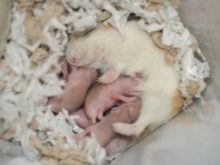
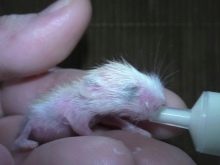
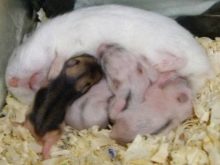
In order for the failed mother to accidentally injure the babies or even eat them, the female and the cubs need to be planted in different cells. Now it is very important for you to be patient and try to keep the entire offspring to the maximum. For the success of your actions, you can follow the following instructions.
- In a cage with newborns should be clean - it is necessary to wash the pan, replace the litter, and for the safety of the kids, you need to remove all things from the cage - toys, objects with sharp edges and corners, containers with water.
- Kids should be put in an impromptu nest - a box or plastic bowl with small pieces of paper towels. You can heat the crumbs with the help of small bottles of warm water, the backlighting is done with ordinary daylight lamps. The optimum air temperature around the clock should be at least 21-22 degrees.
- Get a special dry substitute from your pet store. breast milk for hamsters. If you can not find it, then as a substitute, take the dry milk mixture for newborns. Dilute the composition with warm water according to the instructions, strictly observing the rules of hygiene.
- Kids need to be fed milk formula temperature not lower than 37 degrees, before feeding you should always wash your hands thoroughly.
- When feeding a hamster take in the hand, they drop a drop of milk next to him, bring his nose to this drop and let it lick. You can make an impromptu nipple - for this, a hole is made in the rubber tip from the pipette using a thin hot needle, and then milk is poured from the syringe. The feeding interval for the first 7 days is 1 hour, the second 7 days - 2 hours.
- After the kid ate, he needs to gently stroke the tummy to improve digestion. So it is necessary to do all hamsters and after each feeding.
- From the second week you need to introduce additional complementary foods, consisting of porridge prepared on crushed grains, and small pieces of vegetables. After the hamsters can open their eyes, milk feeding can be reduced to 2-3 times a day.
- Upon reaching two weeks of age babies in their cage need to make a drinker with a spout, from which they can drink themselves if necessary. If hamsters cannot use the drinker, then put a piece of fresh cucumber or celery in their cage - eating it, hamsters can provide themselves with the necessary supply of moisture in the body.
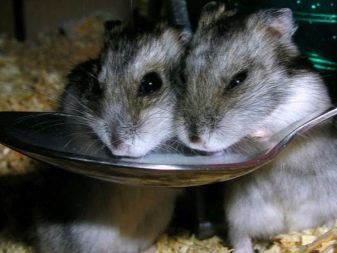
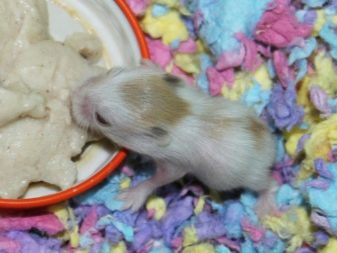
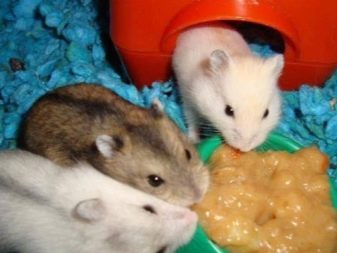
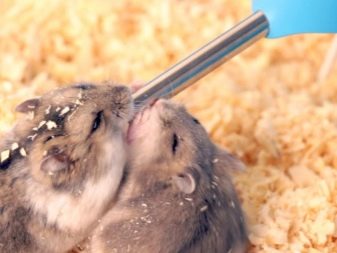
By the age of 1 month, young hamsters are already fully formed individuals that can feed and live independently. At this time, they already need to be separated by gender and put into different cells, otherwise the young growth will begin active mating.
How and what to feed?
For older hamsters, if you left them to yourself, you need to continue to care for adults. The main food of these animals is dry food. It should be cereal grains, chopped grass, a small amount of dried fruits, peeled sunflower seeds, pumpkins, nuts, slices of fresh vegetables or fruits.
The daily diet for rodents needs to be composed of various components, but keep in mind that a hamster can eat only 1 or 2 tablespoons of food per day. If the feed remains undernourished, it must be removed to replace the next day with a fresh portion.
Hamsters need to be given a little fresh fruit and vegetables, as your pet’s intestines may be disturbed by their excess. Hamsters love to enjoy fresh cucumbers, young carrots, fresh cabbage, sweet varieties of apples, pears, ripe pumpkin, zucchini, peach, and sweet cherry.
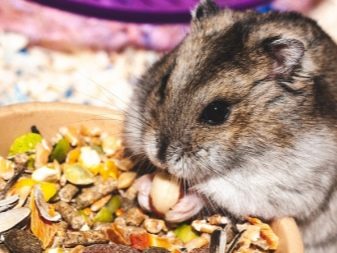
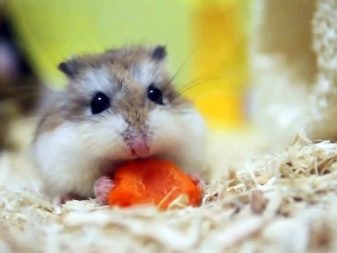

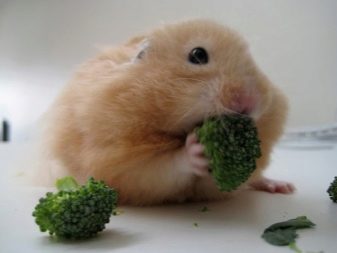
A weekly piece of boiled egg can be introduced into the diet as a protein and vitamin-mineral complex. An egg can be replaced with a teaspoon of yogurt or whole cow's milk. If it’s difficult for you to create a balanced diet, ready-made feed mixtures are sold in pet stores, but they cannot replace complementary foods with vegetables and fruits.
It is not recommended to feed hamsters of any age with products containing salt, pepper, sugar, food additives and dyes. Do not include all acidic foods in your diet, and avoid leaf lettuce, melon, raw onions, and garlic. Do not give a hamster a fish, as the fatty acids that make up its composition are poorly digested and cause digestive upset.
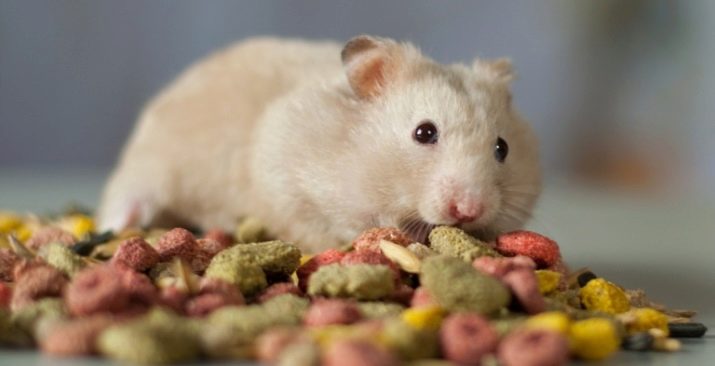
Taming
By the age of two weeks, the female, as a rule, already loses interest in her babies and they can be picked up without fear. If you took care of the crumbs instead of the mother from their very birth, then we can assume that your hamsters are already tame. In two weeks, the kids have already become overgrown with wool, they see, hear and rather quickly run on their small paws. It is required to pick up hamsters so that they get used to people and adequately respond to them.
It’s worth remembering that you need to be very careful in contact with the little hamster - try not to cause him discomfort by squeezing or awkward movement. The baby’s bones are still very soft, fragile and, through negligence, it can easily damage the leg or break the chest. The young hamster is very active and mobile - it can slip out of your hands and fall to the floor. To prevent this from happening, be very careful.
On about the 20th day of life, hamsters can already use toys - climb a hill, run in a wheel, play with each other. Toddlers love to play with cardboard sleeves from paper towels or toilet paper, climb stairs, and climb into small boxes.
You can also take part in their fun games, but for this you first need to tame your pet.
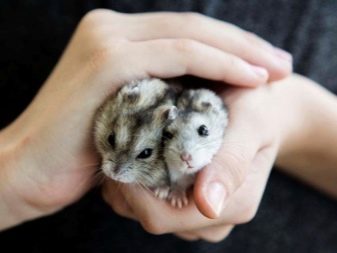
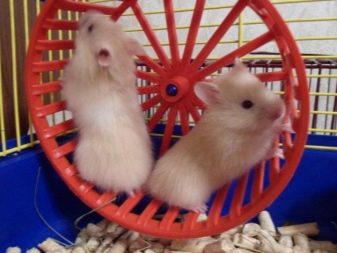
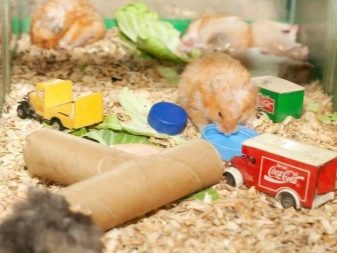
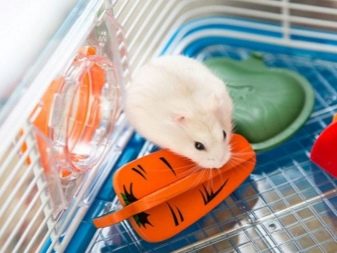
To accustom a young hamster to his hands, you need to have patience, goodwill and act in stages.
- If you bought a hamster in a store, you need to give him several days to get used to the new conditions for him, this period is called adaptation. It is best to leave the baby alone and let him get comfortable in a calm environment. When you notice that your pet is calmly eating and drinking from a drinking bowl in your presence - this means that you can start taming it.
- Take a piece of nut or dried fruit, put it in your palm and bring it to the hamster so that he takes a treat. It is possible that he will take a treat immediately, or maybe so that the baby will not come to you. Then just leave the treat in his cage and step back. Let the hamster calmly eat the proposed treat. If you do this regularly, he will soon realize that these gifts do not pose any threat to him and will begin to feel more confident.
- When the hamster gets bolder Re-offer him a treat in the palm of your hand and give the animal the opportunity to sniff your hand. Do not pull it out and do not scream. Gradually, time after time, accustom the animal to your smell and encourage this action with a treat. After several such exercises, the hamster gets used to it and already quite boldly climbs into your palm.
- Try to give your hamster an empty palm - He will approach you, sniff and climb into your hand. Give him a treat and pat him on the back. Now your animal is not afraid of you and you can play with it.
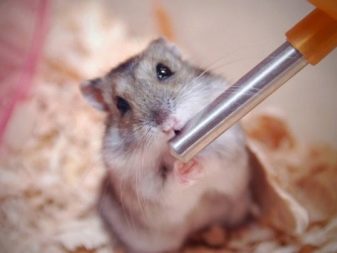
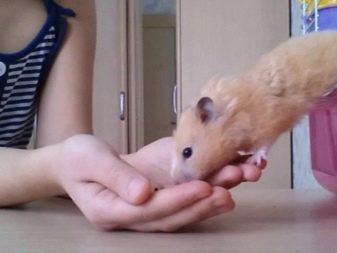
In the process of training, the hamster, as befits a rodent, wants to taste your palm - do not be afraid and scream. A possible bite will be light, it is likely that the baby himself will be scared of an unusual object.
Taming your pet, it is always very important to maintain a calm and friendly atmosphere - only then will a small animal penetrate trust in you, and friendship will be established between you.
The safety rules for caring for hamsters are described in detail in the video below.










